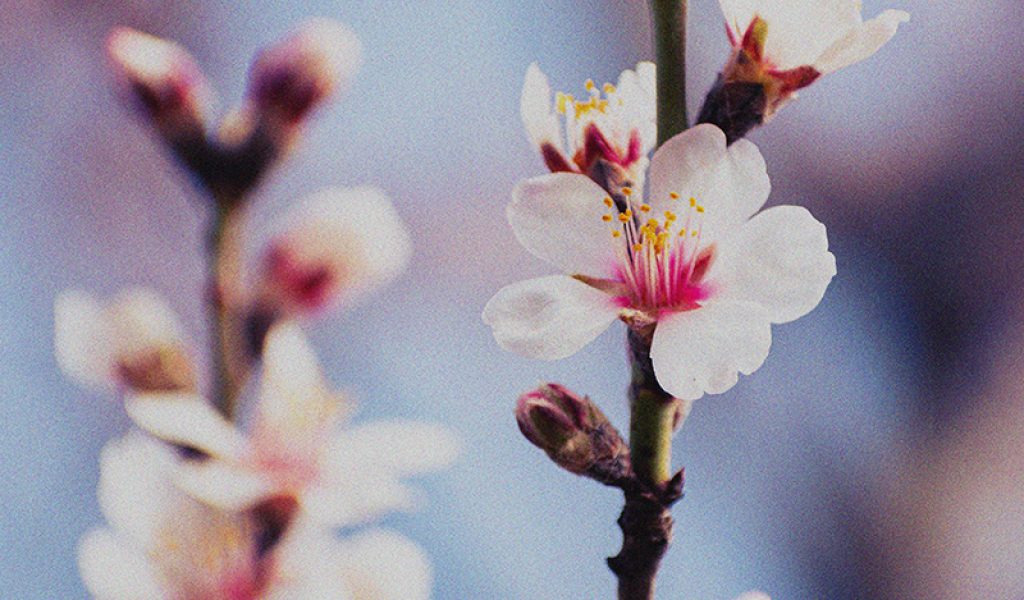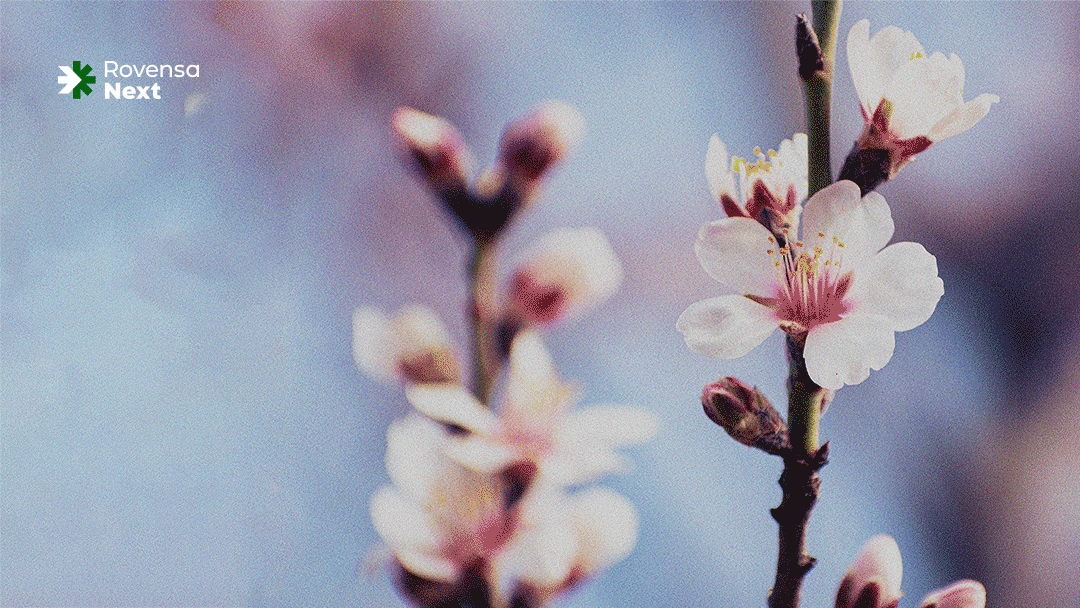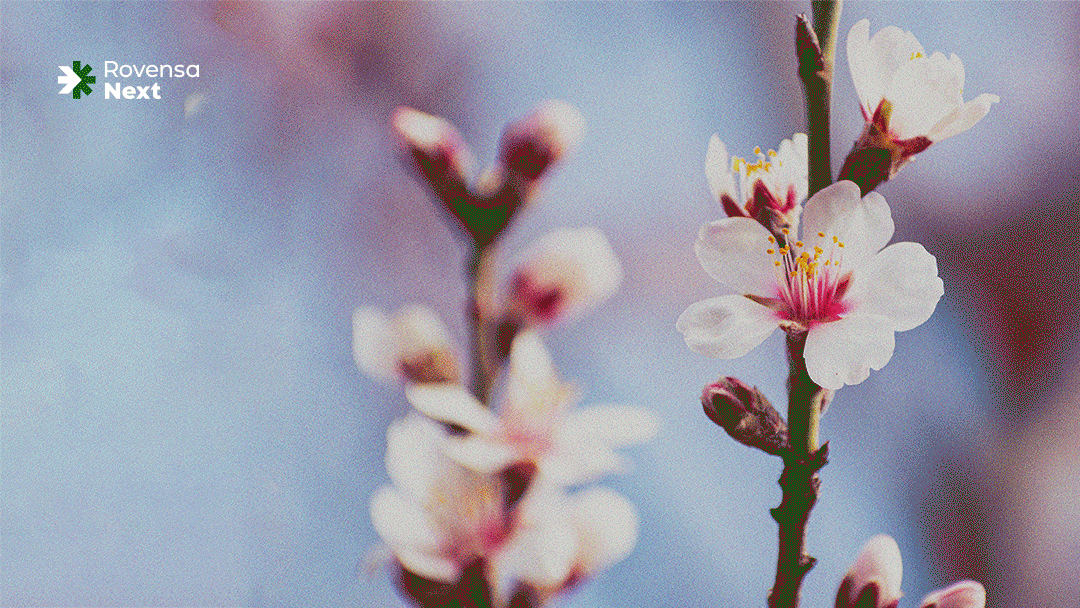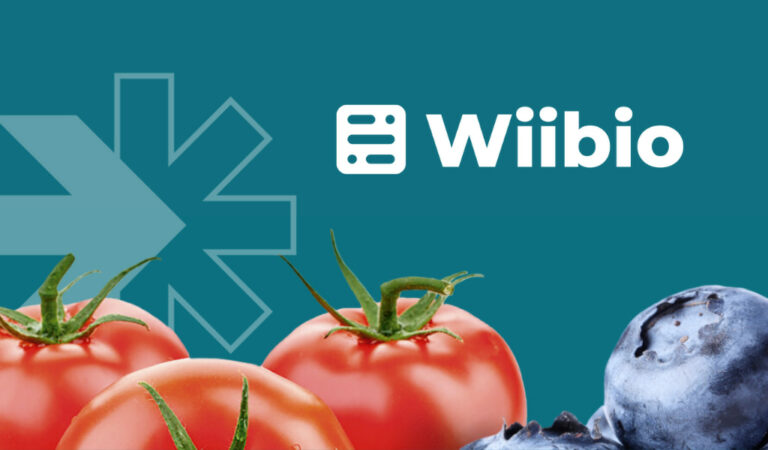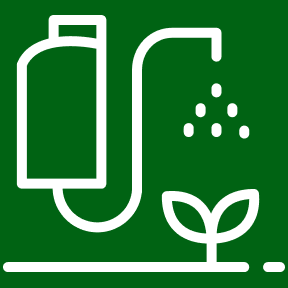We all know this time of the year well, and for many of us it is our favourite season. When the chill in the air begins to disappear, the sun shines that bit brighter, and plants show the first signs of life.
In the fields and greenhouses, this is one of the most pivotal moments of the year. The days or weeks surrounding leading up to, during and after flowering are brief, yet decisive, and make or break the year’s harvest.
What is flowering?
The flowering period is when crops first show their flowers or sprout fruits but it is important to remember that the cells for these flowers may have been initiated late in the previous summer. During this visible part of the flowering plants invest their energy towards their reproductive phase, where from the plants perspective the objective is produce seeds to ensure another generation. But from the perspective of the Grower and consumerit is the key growth stage that will result in tasty and succulent fruit and vegetables and the flowering stage has a large impact on the number of harvested fruits, their size and quality at harvest.
The success of the flowering period can be affected by many factors such as climate conditions, the crop’s baseline nutritional and water status, temperature, light, as well as previous post-harvest management. If flowering is not managed correctly, yield, and ultimately the profit of harvest may not reach its full potential. However, some of these factors, particularly climate conditions are, in general, out of our control.
How is climate change is impacting the flowering stage?
The adverse effects of climate change can mean a variety of things for crops; from unseasonal temperatures that reduce pollination success, to intensified weather that can result in premature flower fall, while even increases of CO2 in the local atmosphere have an impact.
While in some cases such as greenhouses or protected cropping Growers can more easily regulate the temperature, light, water and local environmental conditions of their crops, in the field this is not so easy.
Globally, the climate is changing compared to previous experience for example demonstrated by longer and unseasonal warm periods. While at a superficial level this may appear to be potentially beneficial for flowering, as it could in theory accelerate the flowering of crops and result in a higher pollination success and thus a higher yield, this in fact is not the case. Each crop has an ideal flowering temperature and variations above or below this ideal temperature range can negatively affect flowering success. For example, for crops that require a minimum number of hours below a certain temperature warmer period can present a major issue to flowering success, and this can result in either an overall lack of flowers, or even when flower numbers are sufficient, a failure of pollination.
Conversely, we are all familiar with the effect of unseasonal cold on flowering with the record setting cold snap in Europe last year, that affected production of flowering crops across the continent such as grape and apple a recent example.
Intensified weather, such as prolonged dry periods followed by intense rains, as has happened this past year in Australia, and an increase in severe storms accompanied by extreme heat and cold also means that it can be harder to predict the success of a harvest. Droughts and extreme wet conditions (which are both types of water stress), can have a profound impact on soil function and heath, and this can in turn affect nutrient cycling in the soil and limit the capacity of roots to uptake sufficient nutrients to help power a strong and successful flowering.
We are all by now knowledgeable that Carbon Dioxide (CO2) levels have, and continue to, increase beyond historical norms. While a study conducted by NASA found that, in a controlled environment, higher levels of CO2 led to an acceleration of flowering, and an increase in crop production, it has also been found that higher levels of CO2 can reduce the capacity of plants to adequately self-manage nutrition. So, despite there being a potentially slightly larger yield under higher global CO2, in the end the nutrients, sugar and proteins of the harvest can be reduced. This has an implication on our capacity as a race to meet the future nutritional needs of the global population.
As crop experts, Rovensa Next have developed powerful, innovative, solutions for each phenological growth stage. Since weather conditions are predictable, but not alterable, to help preparation for flowering Rovensa Next’s products are designed to enhance the flowering stage, empower fertility, reduce climate stress, and improve fruit setting. Florastart is a prime example which contains both an optimal nutritional load to feed the plant and power flowering while also contains a biostimulant to help the crop better resist any adverse climate or abiotic stress.
What type of nutrition do plants need in the flowering stage?
Adequate nutrition is critical to ensure that crops have a successful and healthy flowering to help deliver a final optimal yield, and ultimately, profitability. For flowering success, it is most important to tackle nutritional needs before the flowering stage, ideally beginning post-harvest of the previous crop. Preparation for flowering should beginning no later than 6 – 8 weeks before the next visible flowering. This should be followed through during, and post flowering, to ensure a high % fruit set. This means the crop will enter the fruit swell and development stage best positioned to follow though to generate maximum yield and quality.
The three main macronutrients that plants need throughout the growing process are well known and are of course necessary as well during flowering, these are Nitrogen (N), Phosphorus (P) and Potassium (K). However it is important to remember that during the flowering, crops need much less N (in excess during the flowering stage, N can negatively impact the production of flowers and fruits), and a higher proportion of P and K. Phosphorus to help production of the energy molecule ATP in the plant to ensure the crop can generate enough energy and also move this energy to where it is needed during the highly energy demanding flowering stage, while Potassium helps via multiple pathways such as effects on enzyme and hormone pathways, helping the expansion of petals to even promoting sugar accumulation in the flower to help attract pollinators.
But it is important to remember that adequate macro nutrition, is of little benefit to the crop, or the Growers final profitability, if other essential macro nutrients such as Magnesium (Mg) or equally importantly micronutrients are missing. Examples are Boron (B), Molybdenum (Mo) and Zinc (Zn) which are all important for pollen viability and fruit setting, or Iron (Fe) and Manganese that are important in the plant’s energy pathway. Without sufficient and balanced levels of these other nutrients the investment by the Grower in their basal NPK programs risks giving a poor return on their investment.
Tips on optimum crop management to ensure flowering success
Optimum agronomic management practises that minimise the stress and shock of agronomic interventions also play a key role during the flowering period. A steady and optimal supply of water by irrigation (where it is present) is a good example. Considering the probable effects of adverse climate and mitigating these abiotic stress risks are another example.
Management of abiotic stress and adverse climate using biostimulants has become standard practice over the past decade, driven both by scientific and research developments that are bringing a new type of product to agronomic tools kits, as well as driven by climate breakdown. This has accelerated both the need for, and uptake of, these biostimulant tools. Exemplar of these new tools is Florastart that was mentioned previously. Florastart is a product that was specifically designed to enhance flowering, promote pollen production and fertility, and improve fruit setting. Of course, no Rovensa Next product comes to market without an extensive R&D development process, and the result of this approach is now being seen in the field with commercial use and trials generating yield increases in the field (14% in the case of commercial raspberry production) and flower enhancement leading to increased fruit set of 34% in melon trials. This result also follows through in tree crops such as citrus with a 12% improvement in flower set that also resulted in increased fruit size and weight and a reduction in fruit fall.
The biostimulants powering Florastart’s unique dual biostimulant and nutritional formulation are L-α Free Amino Acids, while the nutrient proportions of Phosphorus (P), Potassium (K) Boron (B) and Molybdenum (Mo) are unusual in that the B and Mo are provided in an almost 1:1 ratio with the P and K (on an oxide basis). This ratio has multiple benefits such as helping direct the plant metabolic trajectory back towards flowering where excess N has been applied. The biostimulant component provides increased resistance to abiotic stress as well as an energy boost that can then be built upon by the plant’s metabolism of the included P, while the high Mo proportion promotes natural nitrate reductase in the leaf and the Boron promotes all aspects surrounding pollination success.
Florastart is suitable for use in most flowering crops, such as tree crops like citrus, nut trees, pomegranate, and flowering fruit / vegetables such as Cucurbits (e.g melon) and Solanaceae such as tomato and capsicum among many others. It also can be used in high Boron demanding crops such as (sugar) beet and brassica. Foliar application is preferable to drip irrigation to ensure that the formulation arrives quickly in the leaf where it is most needed, although with slightly earlier application drip irrigation also gives outstanding results. As with all high Boron formulations care should be taken if applying to young cereals crops which have a low Boron requirement.
While flowering is truly a brief stage in the annual crop calendar, preparation for flowering is undoubtedly one of the most critical aspects in the annual crop cycle that impacts profitability at harvest. Adopting the right crop management strategy, to nourish the crop, specifically the flowers, with the right nutrients, supplied in balanced proportions, as well as incorporating innovative biosolutions such as biostimulant into the agronomic program to increase resilience to abiotic stresses is a key step in helping to ensure an optimal harvest that delivers maximum yield and quality and thus profitability.

